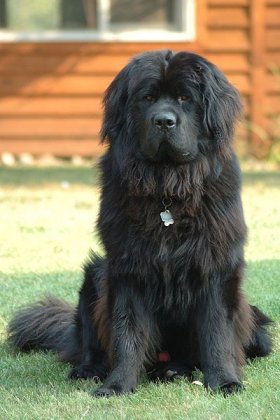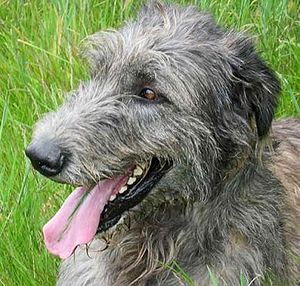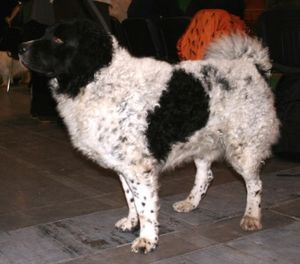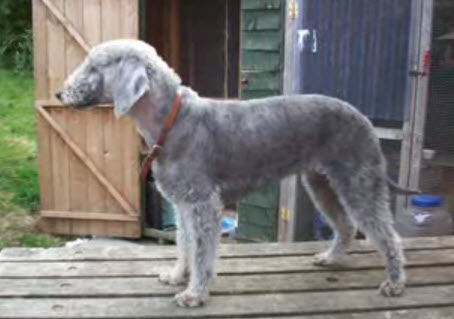 |
| Vital Statistics: |
| Place of Origin: Canada |
| Group: Working |
| Height: 26-29 in. or more |
| Weight: 120-150 lbs. |
| Life span: 8-10 yrs. |
| Trainability: moderate |
| Good with children: yes, supervise with toddlers due to size |
| Good with other pets: yes, some may chase cats |
There are different versions of the origin the Newfoundland. Some think the Vikings may have brought similar dogs to Newfoundland about 1000 A.D. Others believe that Portuguese fisherman brought very large dogs to the island sometime in the 1400s. Still others think the British brought Tibetan Mastiffs to Newfoundland in 1700 where they bred with dogs there. Another theory is that the Newfoundlands are related to the Labradors because of their similarities and the closeness of Newfoundland to Labrador. Wherever the truth lies, these are magnificent dogs.
What does the Newfoundland look like?
The Newfoundland is an impressive dog, 26-29 inches in height and 120-150 lbs. Many Newfoundlands are even larger. Its head is massive with a short, square muzzle. Eyes are small and dark, ears lie flat against the head. Its tail is carried low. The Newfoundland’s hair is long, wavy, coarse and a bit oily. The undercoat is oily as well and the the coat is water resistant. The feet are webbed which helps make the Newfoundland such an incredible swimmer. Color is usually black. Other colors are brown, grey or white with black markings.
What is the Newfoundland’s temperament?
The Newfoundland has an exceptional temperament. Courageous, intelligent, calm, gentle, loyal – these are some of the characteristics that can be attributed to the the Newfoundland. They are very devoted to the family. They can judge a situation on their own and will protect the family when necessary. They are extremely good with children and very protective of the them. To quote Lord Byron, “…Courage without ferocity. And all the virtues of man without his vices.”
What are the Newfoundland’s uses?
The Newfoundland is a natural outstanding water rescue dog. Today its use is limited due to modern equipment and communications on the water, but it remains a loving, loyal companion dog.
Possible Health Issues
Hip/elbow dysplasia, cardiomyopathy, subaortic stenosis, cystinuria (genetic kidney defect).
- Akbash Dog
- Alaskan Malamute
- Anatolian Shepherd Dog
- Appenzell Mountain Dog
- Belgian Malinois
- Boxer
- Burnese Mountain Dog
- Canaan Dog
- Chinook
- Deutscher (German) Pinscher
- Doberman Pinscher
- Dogue de Bordeaux
- Estrela Mountain Dog
- German Spitz (Giant, Standard, Toy)
- Giant Schnauzer
- Great Dane
- Greater Swiss Mountain Dog
- Greenland
- Irish Red & White Setter
- Kai Ken
- Korean Jindo Dog
- Kuvasz
- Laika
- Leonberger
- Norwegian Elkhound
- Rat Terrier
- Rottweiler
- Saint Bernard
- Samoyed
- Siberian Husky
- Standard Schnauzer
- Tibetan Mastiff



